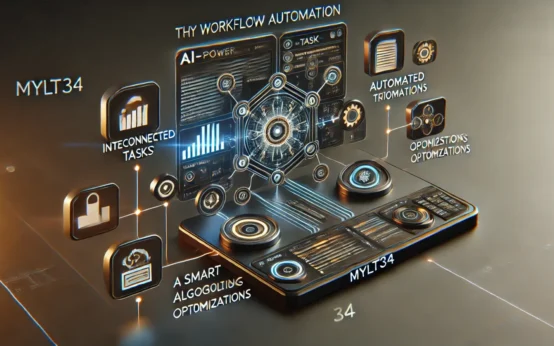Modern businesses cannot function without proper power protection. Organizations worldwide need to understand UPS electrical systems and their meaning. Three UPS configurations provide different protection levels: online double conversion, line-interactive, and offline systems.
UPS technology safeguards against power disturbances in various ways. Online double-conversion UPS systems deliver uninterrupted power with zero transfer time. Line-interactive systems excel at managing voltage fluctuations. Standard offline UPS units protect equipment from power spikes and can effectively handle more than 90% of outages.
This piece explains everything about UPS systems. You’ll learn the simple functions and find the solution that matches your needs. Our straightforward explanations also make complex power protection concepts easier to understand.
Table of Contents
What is a UPS System?
A UPS (Uninterruptible Power Supply) is a crucial backup power device that kicks in automatically when electrical problems occur. This advanced system differs from regular backup generators because it provides instant power protection without service breaks.
The simple function of UPS
A UPS delivers steady, clean power to connected equipment. These systems excel at power conditioning and filter out harmful electrical disturbances that could harm sensitive equipment. The system’s built-in battery stores electrical energy and releases it right when needed.
Modern UPS systems handle several key tasks at once. They protect against power surges, eliminate electrical noise, and stabilize voltage levels during line sags. The systems can spot potential threats and react quickly to stabilize voltage from main electrical lines.
Why businesses need UPS protection
Power-related issues pose significant risks to businesses, so UPS protection proves valuable. Small businesses can lose about £800 per hour in productivity during a single power outage. Power disruptions can also cause:
- Data corruption and loss in computer systems
- Equipment damage from sudden shutdowns
- Interruption of critical operations
- Potential safety concerns in specialized workplaces
The financial effects go beyond immediate downtime. UPS systems help companies cut energy costs through features like “peak shaving,” which lets them run on battery power when grid prices are high. These systems also support environmental sustainability by making equipment last longer and reducing electronic waste.
Healthcare facilities, data centers, and industrial settings need UPS technology to protect against power problems. The systems come in different sizes—from small units that protect single computers to large setups that safeguard entire facilities. Power ratings for individual devices start from 200 volt-amperes.
UPS systems ensure business operations continue during brief outages and give enough time to shut down equipment properly during more extended power failures. This dual role makes them essential for modern businesses that rely on sensitive electronic equipment and data operations.
Common Power Problems UPS Systems Solve
Power disruptions create significant problems for modern equipment and operations. Knowing how these power issues work helps explain why UPS technology has become vital for protecting sensitive devices.
Power outages
Lightning strikes, downed power lines, or grid overloads cause complete power loss, representing the most severe power disruption. These blackouts can last anywhere from a few minutes to several days. UPS systems provide immediate backup power that allows safe equipment shutdown or continued operation instead of risking data loss or equipment damage.
Voltage fluctuations
Voltage issues appear in several forms, especially when you have sags and surges. Prominent equipment startup or utility switching usually causes short-term voltage drops that can damage hardware and cause system crashes. You’ll notice voltage fluctuations through:
- Lights and display screens that flicker
- Systems that fail to start up
- Lost data in computing systems
- Equipment that doesn’t last as long
UPS systems actively regulate voltage levels, unlike simple power strips. They maintain stable output through automatic voltage regulation, protecting connected devices from harmful power variations, whatever the input fluctuations might be.
Frequency variations
Electronic equipment faces severe effects from frequency stability problems that aren’t adequately managed. These variations typically happen when generators or small co-generation sites undergo loading and unloading cycles. Changes in frequency can cause erratic operation that leads to system crashes and potential equipment damage.
The UPS type used determines how frequency variations are handled. Line-interactive and standby UPS systems use battery power to prevent frequency variations from affecting protected loads. Double-conversion online UPS systems create the sine wave again and filter frequency variations during regular operation, which helps preserve battery life.
Organizations can shield their equipment from these common power problems by understanding and implementing proper UPS solutions. Each power disturbance type needs specific protection mechanisms, making UPS selection vital to maintaining operational continuity and equipment longevity.
Three Main Types of UPS Technology
The proper UPS system selection depends on understanding each type’s distinct features. Different systems provide specific benefits for UPS electrical applications.
Online double conversion
Data centers and critical operations rely on online double conversion, the most advanced UPS technology. The system converts incoming AC power to DC and then back to AC through a double conversion process. A perfect sine wave output emerges from continuous power conversion, completely isolating power disturbances.
The system’s biggest advantage is its zero transfer time to battery power. Connected equipment stays protected from power anomalies because the inverter supplies the load without interruption. The systems can maintain voltage regulation within ±1% and protect against harmonics and frequency variations.
Line-interactive systems
Line-interactive UPS systems combine reliability with high efficiency. These systems work best in places where outages rarely happen, but power fluctuations are common. The units handle broad input voltage changes before switching to battery backup, with a 4-6 millisecond transfer time.
The system’s voltage boost circuitry conditions power through an automatic voltage regulator. In normal operation, the units reach efficiency ratings of 92% or higher. Continuous inverter operation at the output delivers better filtering capabilities than offline systems.
Offline/standby UPS
Offline UPS systems provide simple power protection as a budget-friendly option for less critical needs. These systems route utility AC power during regular operation through an EMI/RFI filter. When power problems occur, the system switches to battery power in 6-8 milliseconds.
Key features of offline UPS include:
- Protection against simple power spikes and transients
- Support for loads under 1500VA
- Simple surge protection capabilities
- Budget-friendly power backup solution
This technology benefits desktop computers, gaming consoles, and other non-critical equipment. The offline UPS systems protect against most power spikes and manage over 90% of outages despite offering less conditioning than other types.
How Online Double Conversion UPS Works
Online double conversion UPS technology uses an advanced power protection system with a sophisticated two-stage process. This method represents the highest standard of UPS electrical implementation.
Power conversion process
AC power enters the UPS system and starts the double conversion process. The rectifier converts this AC power to DC power, creating a stable foundation. The converted DC power serves two vital purposes: it charges the battery system and feeds the inverter.
The rectifier maintains a steady power flow to the battery and connected equipment during regular operation. The inverter converts the DC power back to clean AC power and delivers a perfect sine wave output to protected devices.
The system switches smoothly when power fails. The rectifier drops from the circuit and lets batteries maintain power flow without interruption. Once utility power comes back, the rectifier automatically starts powering equipment and recharging batteries.
Key advantages
Online double conversion UPS systems offer unique performance benefits:
- Superior Power Quality: The system achieves voltage regulation as precise as ±1%, protecting equipment from both over and under-voltage conditions
- Complete Isolation: The AC-DC-DC-AC conversion process creates a perfect barrier against power anomalies
- Zero Transfer Time: Connected equipment experiences no interruption when switching to battery power
- Enhanced Efficiency: Modern systems operate at efficiency levels exceeding 90% while running on inverter power
The continuous power conditioning removes almost all electrical disturbances, including harmonics and waveform distortion. The output power quality is much better than that of other UPS technologies.
This technology works well with frequency regulation and pairs perfectly with backup generator systems. It protects against variations that happen during generator startup. The system creates a new sine wave instead of just conditioning utility power, which gives consistently clean power.
An emergency bypass feature adds another layer of protection by keeping power flowing even during internal system problems. This backup system handles significant input voltage changes (typically 276V-184V) and reduces unnecessary battery use.
These features give unmatched power protection in mission-critical environments. The technology blocks sensitive equipment from blackouts, brownouts, sags, surges, and electrical noise. This complete protection makes online double conversion the top choice for data centers and other high-priority applications that need steady power quality.
Choosing the Right UPS System
You need to consider multiple factors to pick the right UPS technology that will provide solid power protection. By taking a step-by-step approach, organizations can make better decisions that match their needs.
Power requirements
The first step is to calculate the total wattage of all devices that need protection. You should create a complete equipment list of computers, servers, networking devices, and other critical hardware. Here’s what you need to do:
- Look up power consumption (watts) on each device’s power adapter or manual
- Turn amperes into watts using: Watts = Volts × Amperes (120V for US)
- Add all device wattages to get your total power need
- Add 20-25% extra room to grow
We found that UPS capacity should be 25% more than your total power needs to avoid overload issues. For example, see a system using 2150W – it requires a UPS rated around 2700W to work at its best.
Budget considerations
UPS selection costs go beyond just buying the unit. The total cost covers several key areas you need to evaluate:
Most installation costs involve professional electrical work, especially for systems above 1500VA that require special receptacles. Battery replacements are part of regular maintenance and occur every three to five years.
Energy efficiency ratings significantly affect long-term costs. Line-interactive systems can achieve 92% efficiency or higher, and modern online double-conversion systems work at over 90% efficiency.
Cheaper options might look good initially, but high-quality UPS systems save money over time. The purchase price is 25% to 40% of your overall spending.
Installation space
Your UPS system needs careful placement planning to work correctly and stay maintained. Good airflow is vital—these units need clean, cool spaces away from sunlight.
Pick your form factor based on your space:
- Desktop/Compact UPS: Works great under desks or on walls
- Tower/Mini-Tower: Perfect for floors or shelves
- Rackmount: Fits standard 19-inch server racks, taking 1U to 14U vertical space
Leave enough room around your UPS for cooling and maintenance. For proper airflow, you need at least 500mm of space on all sides. Watch out for floor strength, too—these systems can weigh over 1000kg.
Your installation spot should have room to grow. Modular UPS systems let you add more power without major space changes, so smart organizations plan ahead when choosing where to put their UPS.
The best temperature is 25˚C (77˚F), especially for lead-acid batteries. Good security is also essential to prevent unauthorized access and people from plugging in equipment they shouldn’t.
Conclusion
UPS electrical systems are vital in organizations that depend on uninterrupted power supply. These systems do much more than just backup power. They are complete power protection platforms that shield critical equipment and operations from electrical disturbances.
Different UPS types have advantages. Online double conversion systems provide premium protection when operations are mission-critical. Line-interactive units strike a good balance between efficiency and reliable protection. Offline systems deliver simple yet effective backup power for less demanding tasks.
Successful UPS implementation starts with the right system choice and proper upkeep. The selection process depends on power needs, budget, and space constraints. The system needs regular testing; batteries require careful maintenance to perform well and last longer.
UPS systems are worth every penny for keeping operations running and protecting equipment. When you choose, install, and maintain them properly, these systems safeguard organizations from pricey downtime and equipment damage. That’s why they’re must-haves in today’s business world, where everything depends on power.

 127.0.0.1:62893 Solved: Fixing Common Connection Errors
127.0.0.1:62893 Solved: Fixing Common Connection Errors  fintechzoom .io: Making Money Management Simple & Smart
fintechzoom .io: Making Money Management Simple & Smart  MYLT34 Unveiled: Unlocking Business Success
MYLT34 Unveiled: Unlocking Business Success  Antarvwsna: Embracing a Revolutionary Technology
Antarvwsna: Embracing a Revolutionary Technology  Jonathonspire: Unveiling the Power of Innovation
Jonathonspire: Unveiling the Power of Innovation  techdae.frl: A Positive Outlook on the Future
techdae.frl: A Positive Outlook on the Future